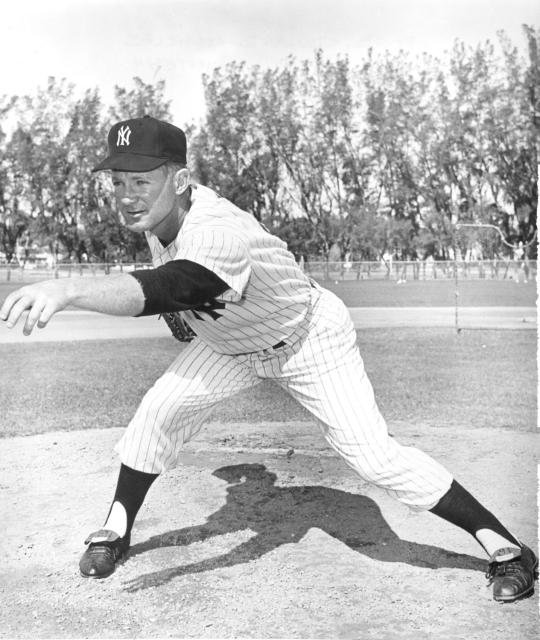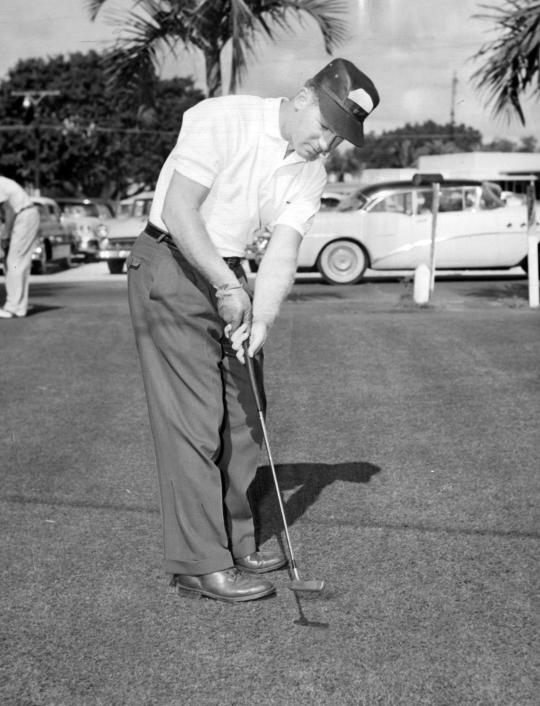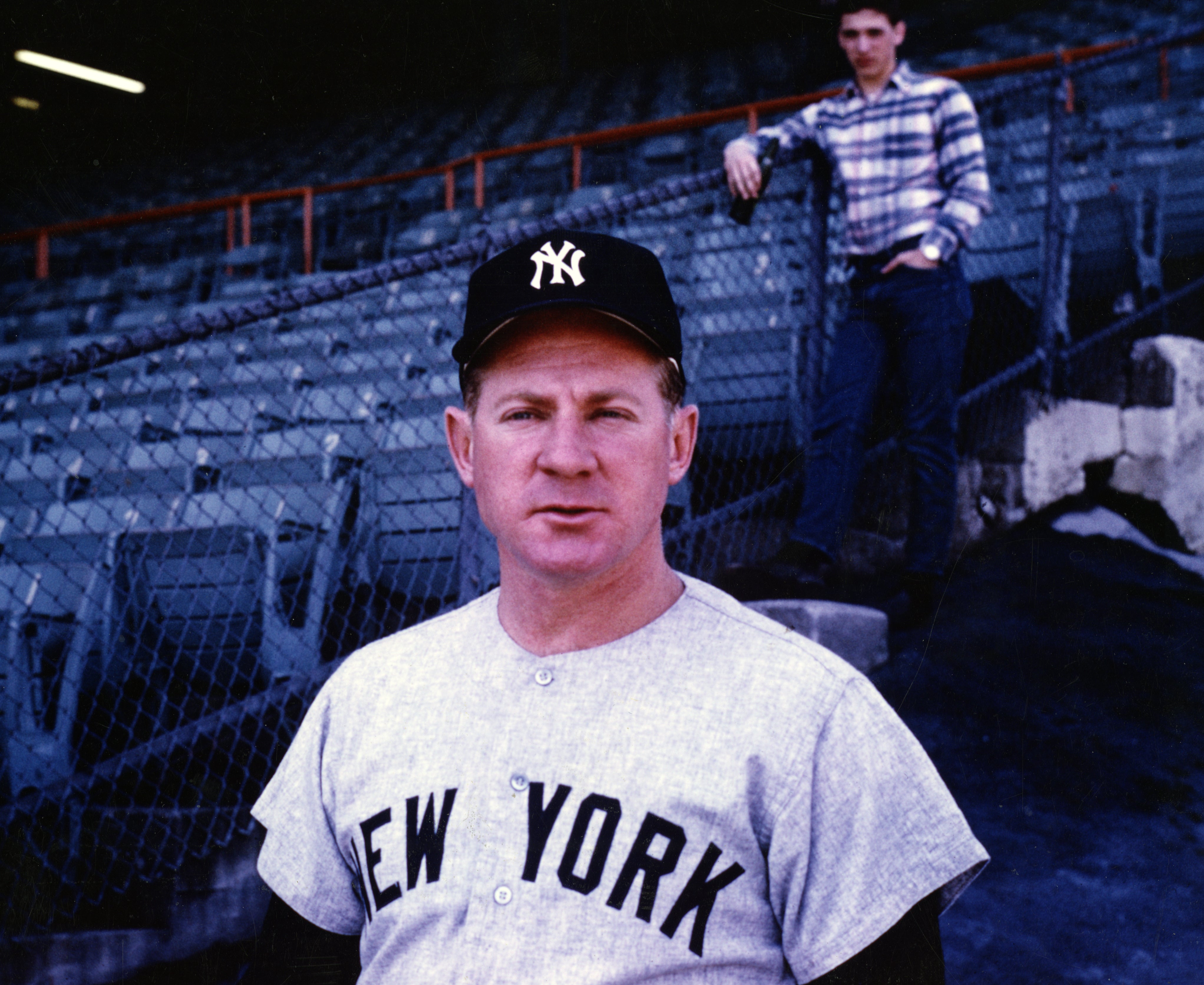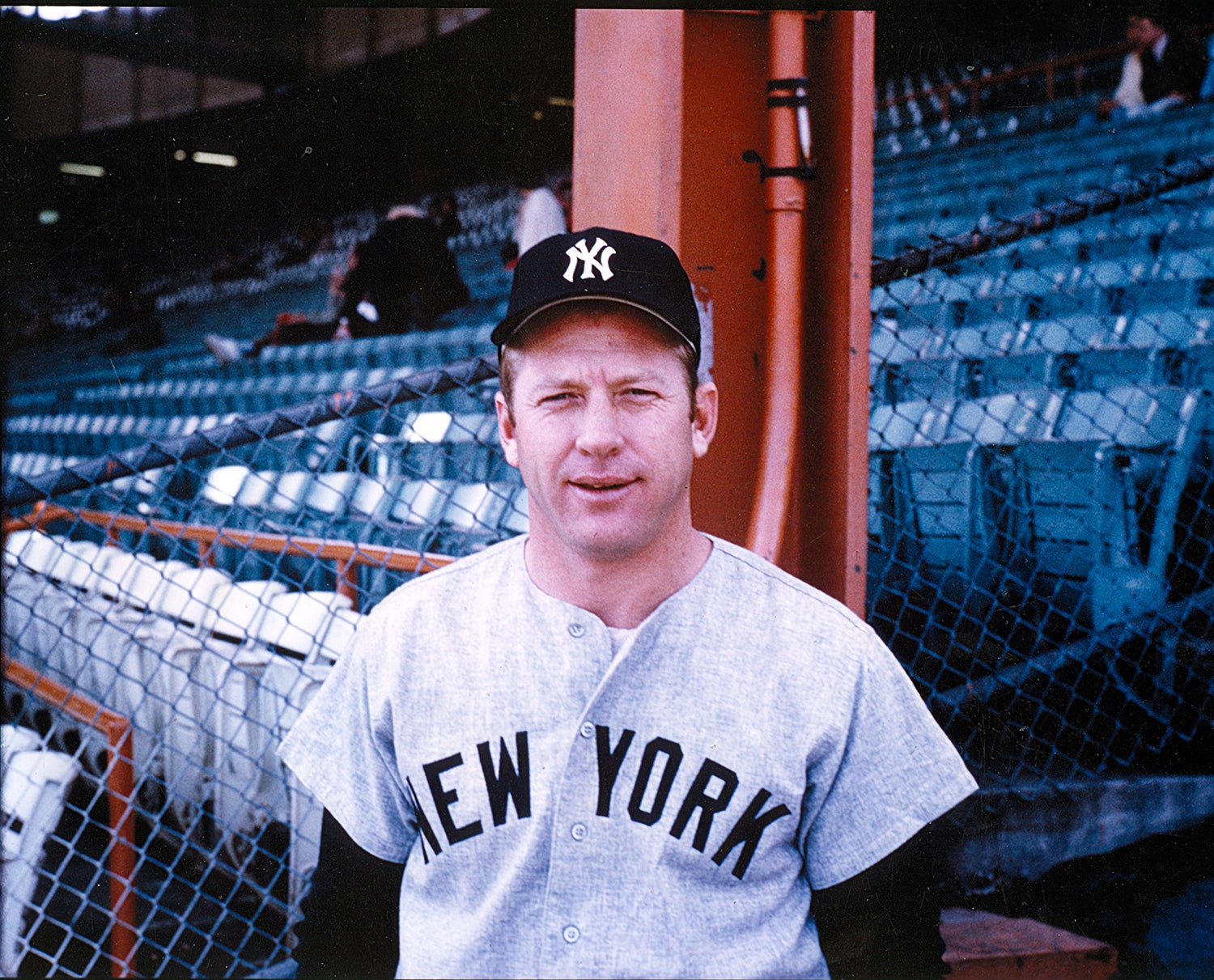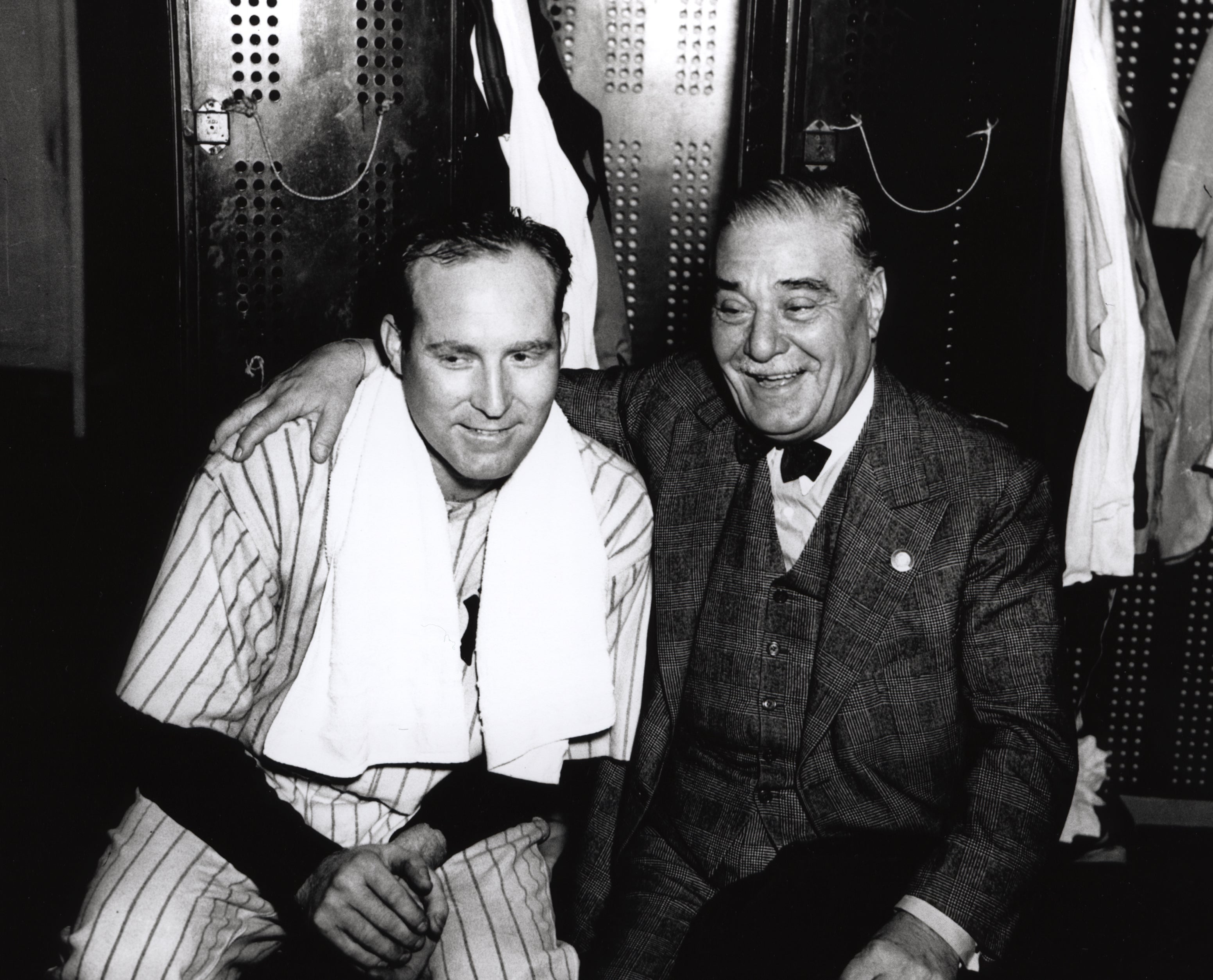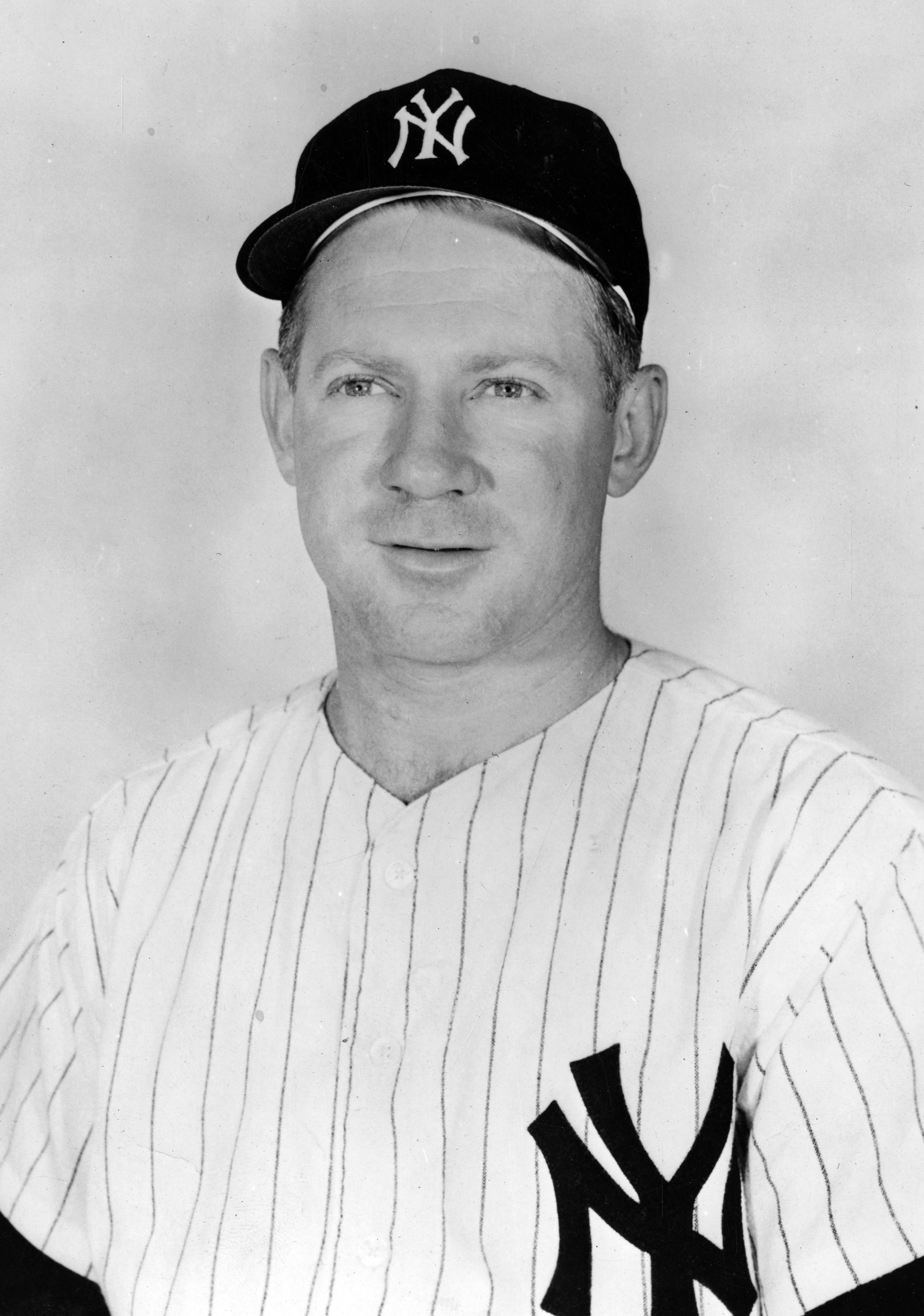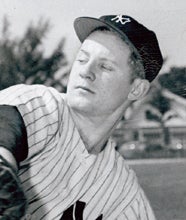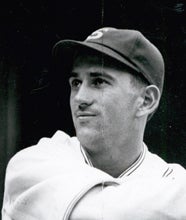- Home
- Our Stories
- Ford’s pitching skill was everlasting
Ford’s pitching skill was everlasting
Persistent arm injuries forced legendary New York Yankees pitcher Whitey Ford to hang up his glove more than five decades ago. But a few successful exhibition appearances a year later led to speculation of a mound return for “The Chairman of the Board.”
On May 30, 1967, a noon press conference was held at Yankee Stadium in which the 38-year-old Ford announcement his retirement. The sturdy 5-foot-10 southpaw, whose 236 victories remain the most in franchise history, explained he was leaving the game because of a persistent bone spur in his left elbow.
Yankees Gear
Represent the all-time greats and know your purchase plays a part in preserving baseball history.
“I’m positive I’m doing the right thing. But I wish I could have played a few more years to be part of the rebuilding program,” Ford, holding back tears, told the assembled media. “The things I’m going to miss most are the players, the games and the road trips.”
The witty lefty added: “I came here in 1950 wearing $50 suits and I’m leaving wearing $200 suits. So I guess I’m doing all right.”
Then, after a pause, the fun-loving Ford added with a smile, “I got them for $80.”
Ford’s final big league action took place nine days earlier, on May 21, when, at Detroit, he started, gave up one run in one inning of work, then left complaining of pain in his left elbow. In that, his 16th and final big league season, Ford, who had been hampered by arm trouble the past few years, finished with a 2-4 record in seven games started, a 1.64 ERA, and 21 strikeouts in 44 innings pitched.
“It’s the same old problem Whitey had in the past,” said Dr. Sidney Gaynor, the Yankees’ team physician. “A fairly large spur has caused inflammation of the tendons and muscles around the elbow.”
Ford, who had previously had arm surgery in both 1964 and ‘66, said another operation was out of the question. “There’s too much muscle and tissue to cut through. I wouldn’t go through that again.”
But the pitching exploits of Edward Charles Ford, who played on 11 Yankees pennant-winning teams, were not, in fact, over. The left-hander returned to the rebuilding Yankees the following year as manager Ralph Houk’s new first base coach. Besides Ford, the 1968 Yankees coaches included Frank Crosetti, Jim Turner and Jim Hegan.
In what turned out to be Ford’s final appearance on a big league mound, he tossed a perfect inning on the annual Mayor’s Trophy game against the Mets on May 27, 1968. The exhibition, which the two franchises began playing in 1963, drew 35,198 fans to Shea Stadium in the 4-3 Mets victory. The crowd contributed nearly $100,000 to the cause of sandlot baseball.
Ford, who pitched the sixth inning – striking out Ed Charles before getting Tommie Agee and Don Bosch on grounders – addressed this particular outing in his 1987 autobiography, “Slick: My Life In and Around Baseball,” written with Phil Pepe.
“I had started pitching batting practice in Spring Training in 1968, and my elbow felt good. I came so close to saying I should try pitching again, but I didn’t do it. I would only have been kidding myself,” Ford wrote in his book. “During the season, I would pitch batting practice a lot, especially on the road, because we didn’t carry a batting-practice pitcher with us on road trips and the other coaches were older. So I was the one who would usually go out there and throw.
“I was throwing curveballs and sliders with no pain and the hitters loved it, because I always could throw strikes.
Some of them even said to me, ‘Geez, Whitey, you’re throwing better than half the guys on our pitching staff. Why don’t you make a comeback?’
“I did get to pitch in a game. We were playing the Mayor’s Trophy exhibition game against the Mets in Shea Stadium, and before the game, Houk said to me, ‘Would you pitch an inning if I need you? We’re a little short on pitchers.’ I said sure.”
A few months later, on July 25, Ford again toed the rubber when the Yankees played an exhibition against their Triple-A affiliate Syracuse Chiefs. Prior to the game, Houk announced that his pitchers would be Ford, outfielder Rocky Colavito and utility infielder Gene Michael.
Colavito, a longtime American League slugger, had signed as a free agent with the Yankees only a week earlier. A high school pitching star, he had tossed four minor league innings in 1951 and three scoreless frames for the 1958 Indians.
“Colavito and Michael have good arms and I’m going to let them have a fling,” manager Houk explained. “Michael pitched in the Arizona Instructional League last winter when he was with the Dodgers. He had a 3-0 record. He’s been thinking about pitching.”
“We might come back with a whole new pitching staff,” the always boyish and brash Ford quipped when he heard the news.
Newspapers across the country highlighted Ford’s remarkable performance against the Syracuse minor league team.
“Left-hander Whitey Ford showed 10,523 fans a flash of his onetime greatness tonight as the Yankees shutout their Syracuse farm club of the International League, 5-0, in an exhibition game,” read the next day’s New York Times. “Ford, now Yankee first base coach, tied the Chiefs into knots for the first three innings. Syracuse didn’t do much better against his successors, Rocky Colavito and Gene Michael, collecting a total of five hits.”
A capacity crowd packed Syracuse’s MacArthur Stadium, in part to due to the two great gate attractions in Mickey Mantle and Ford, and it necessitated 50 extra police to handle the Thursday night affair.
Ford picked up the win with his three scoreless innings – a one hit, one walk, five strikeout performance – while Colavito collected three hits and pitched two frames, and Michael went two.
“As we watched Whitey Ford in his brief stint as a hurler for the Yankees in the exhibition game, the one-time great hurler seemed to possess all the skill and mound finesse that he used to show,” wrote Watertown Daily Times Sports Editor Jack Case. “There were fans sitting near us in the crowded stands who were heard to remark that Ford looked good enough to take over as a regular reliever for the Bombers. During the three innings he worked, Whitey showed plenty of skill and some of his old time form in slipping strikes past batters.”
Ford, according to The New York Times in August 1968, scoffed at the idea that the Yankees should reactive him and sell him to a pennant contender as a relief pitcher despite his four scoreless exhibition innings – one against the Mets, three against Syracuse.
But Ford wasn’t done pitching in 1968, tossing a scoreless third of an inning in the 22nd Yankees Old-Timers’ Day at Yankee Stadium on Aug. 10. In the two-inning exhibition, Ford induced a Luke Appling pop-up near the mound.
After the 1968 season, it was announced that Ford would be leaving his coaching duties with the Yankees to concentrate on his outside business. Elston Howard, who in 1955 became the first African-American ballplayer for the Yankees, took over for Ford as first base coach, becoming the first African-American coach in the American League.
Using an assortment of pitches, Ford would finish with a career record of 236-106, his .690 winning percentage one of the best in baseball history.
The eight-time All-Star and 1961 Cy Young Award winner would league the league in wins and winning percentage three times, and innings pitches and ERA twice. During his tenure, the Yankees would win six World Series crowns.
Longtime teammate Mickey Mantle, who was inducted with Ford into the National Baseball Hall of Fame in 1974, once remarked, “I don’t care what the situation was, how high the stakes were – the bases could be loaded and the pennant riding on every pitch - it never bothered Whitey. He pitched his game. Cool. Crafty. Nerves of steel.”
Bill Francis is the senior research and writing specialist at the National Baseball Hall of Fame and Museum

